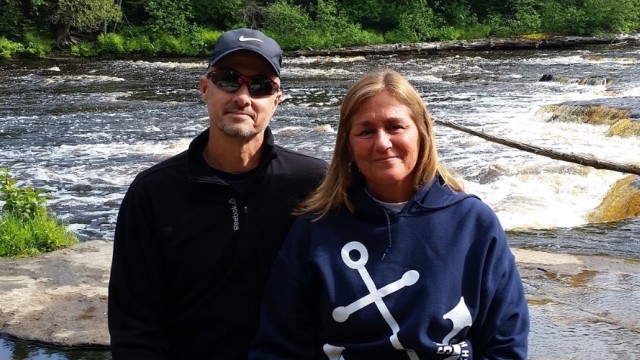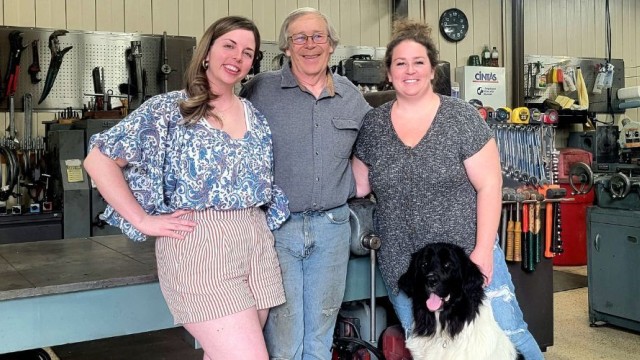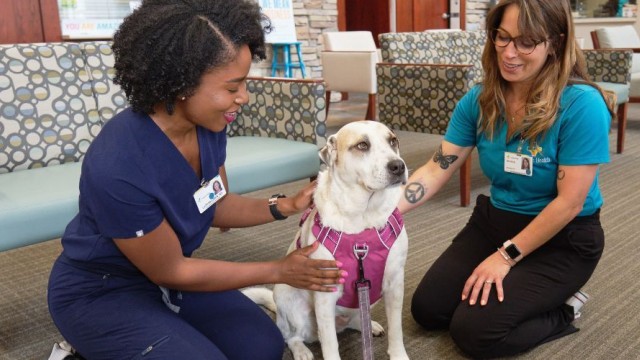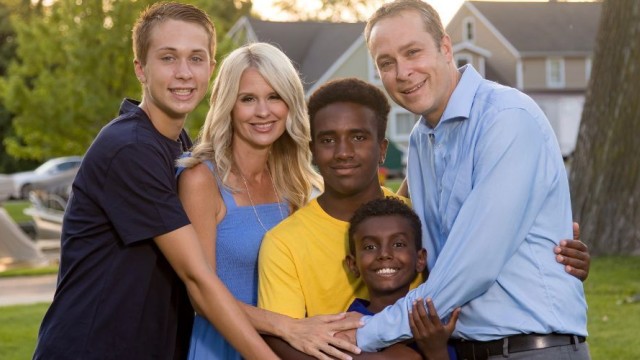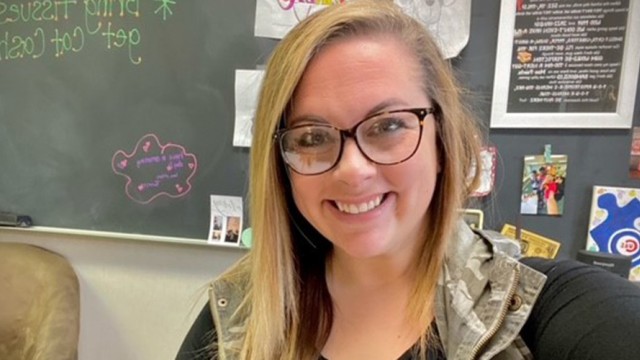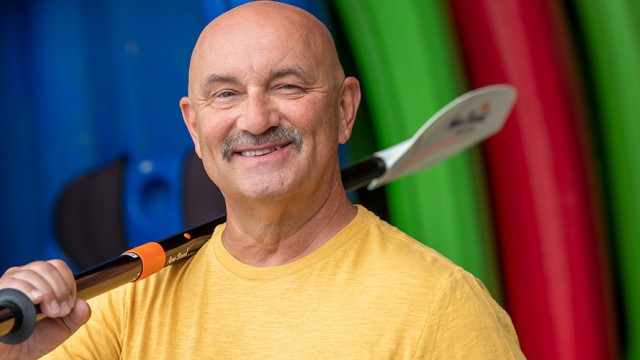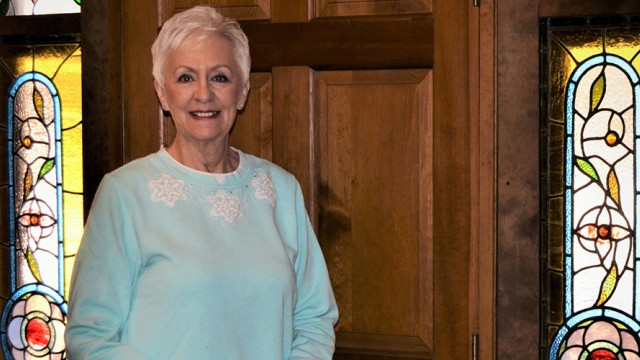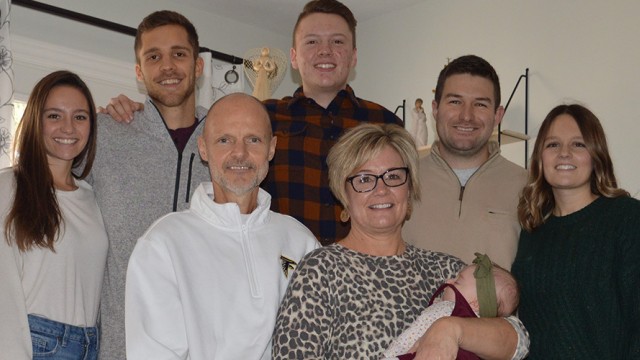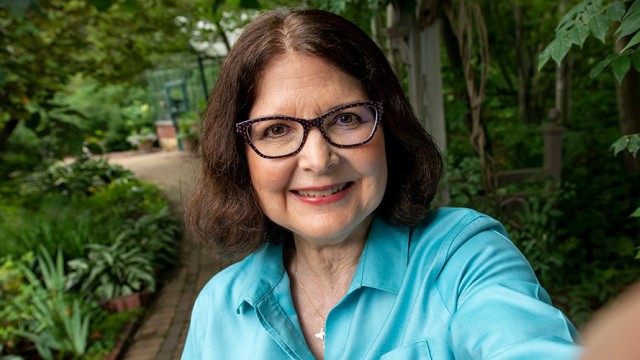El tratamiento con radiación de dosis única para el cáncer de mama le devuelve la vida a la paciente
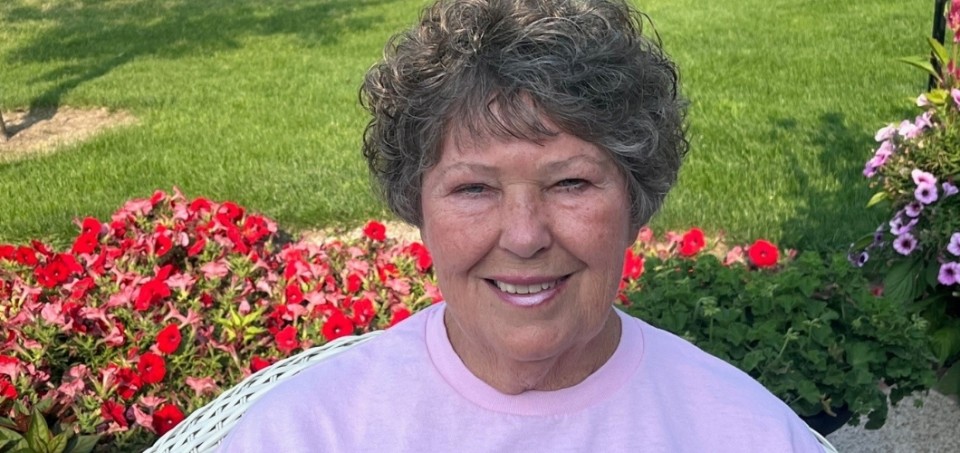
The first time Barbara Sheets had a breast biopsy, she felt relieved. The suspicious spot was nothing more than fibroid tumors—not cancer. A second biopsy years later showed the same result.
Barb had a lumpy breast full of cysts, or fluid-filled sacs. It’s a common condition for women and usually does not lead to serious complications.
The third biopsy Barb had in March 2023 went against the odds. Barb, age 73, had cancer in her left breast. She needed a surgery, radiation and possibly drug therapies.
“My doctor removed a golf-ball size tumor,” Barb said. “He thought the cancer was self-contained and hadn’t spread.”
All good news, but Barb still had doubts. What if cancer had spread to other parts of her body? How would she know if she was at higher risk for the cancer to come back?
Her surgeon had not removed any nearby lymph nodes for biopsy during the lumpectomy. Clinical studies suggest the procedure is not necessary for women over age 70.
Barb needed a standard course of radiation therapy – five days a week for four weeks, according to her doctor. That would lower her risk of the cancer coming back.
The treatment plan didn’t help Barb’s peace of mind. Before she could think about next steps, she had to find out if cancer had spread beyond the breast.
“I went into fight mode,” she said. “I needed to know.”
Barb had a full life to live. She and her husband, Jerry, had a packed calendar of sports events, band concerts and family celebrations to attend with their seven grandchildren. Her garden on their four-and-a-half acres burst with vegetables – and an occasional weed – each year. Canning season filled her days and pantry shelves.
“I am outside every day,” Barb said. “And we have a close family, all nearby.”
Convenience plus results in one procedure
Barb chose Goshen Center for Cancer Care for a second opinion, based on a recommendation from a friend. The center was a two-hour drive for Barb, who lives in Bluffton, Indiana. That didn’t matter.
What mattered most to Barb was the personal approach that Dr. Laura Morris, Breast Surgical Oncologist, brought into the room. From the moment Barb and Jerry met Dr. Morris, they knew Barb was in the right place.
“I told Dr. Morris I’m here and I’m not planning on leaving,” Barb said. “It’s my decision what I want done, and I needed to know if cancer was in my lymph nodes.”
After an exam and review of Barb’s medical records, Dr. Morris laid out a plan. Biopsy the lymph nodes during a second surgery. Remove tissue around the margin of the tumor cavity for testing. Deliver intra-operative radiotherapy, or IORT, into the cavity during surgery, unless cancer had spread into the lymph nodes.
IORT infuses the tumor cavity with a high concentration of radiation during surgery. The single course of IORT keeps radiation exposure away from healthy tissue surrounding the tumor site. It also lowers the risk of recurrence, since the radiation is targeted to the area of the breast that is most at risk for cancer to return.
In most cases, patients do not need additional radiation treatment. That means IORT spares them from up to six weeks of daily whole breast radiation treatments.
For Barb, IORT during her surgery would mean only one trip to Goshen—not 20 days of long-distance travel for 15-minute radiation sessions.
Barb fit all the qualifiers for IORT. At 73, she met the over-50 age requirement. She had invasive ductal carcinoma in an early stage. Cancer cells tested positive for receptors that attach to the hormone estrogen. Her tumor size was small and the tissue around the tumor was clear of cancer cells.
Only one question needed an answer to move forward with the single-dose radiation therapy. It was the one Barb had been asking all along. Had cancer spread to the lymph nodes?
“The radiation oncologist thought I could be a good candidate for IORT,” Barb said. “He told me, ‘I will be there during surgery and will do it then if I can.”
The goal: Keep cancer from coming back
Post-surgery, Barb got the answer she needed to get on with her life. The lymph node biopsy showed a negative result. She was cancer-free in the lymph nodes and tissue around her tumor site.
These results also meant more good news. Radiation Oncologist Dr. Houman Vaghefi had delivered a high dose of radiation directly into the tumor site for seven minutes at the end of Barb’s surgery. This one-and-done therapy gave Barb the best chance to keep the cancer from coming back. It also saved her hours of travel time to and from Goshen for external beam radiation therapy.
During her healing process, Barb kept busy making blankets for a neonatal intensive care unit at a Fort Wayne hospital. She and her family had spent weeks in the NICU after a grandson was born prematurely.
“It’s a way for me to give back to all the nurses who took care of our grandson,” she said. “I remember those dark, dark days.”
Cancer doesn’t wait
With a brighter outlook about her own life, Barb speaks out about the importance of regular cancer screenings and early detection.
“Don’t forget. Don’t put it off,” she said. “Get your mammograms and screenings on time.”
Barb is now on a six-month schedule for 3D mammograms, instead of once a year. She also gets a bone density scan to check for osteoporosis. Bone loss can occur now that Barb takes endocrine therapy to block the body’s production of estrogen. The drugs lower chances of the cancer coming back and improve chances of living longer.
“I have a lot of life to live,” Barb said. “I have no intention of slowing down.”
Goshen Center for Cancer Care offers surgical, radiation and medical oncology treatment options for patients with breast cancer. The center has been offering IORT, which delivers a single therapeutic dose of radiation at the time of surgery for early-stage favorable breast cancer, since 2017. No other cancer center in north central Indiana offers this advanced form of internal radiation therapy.
